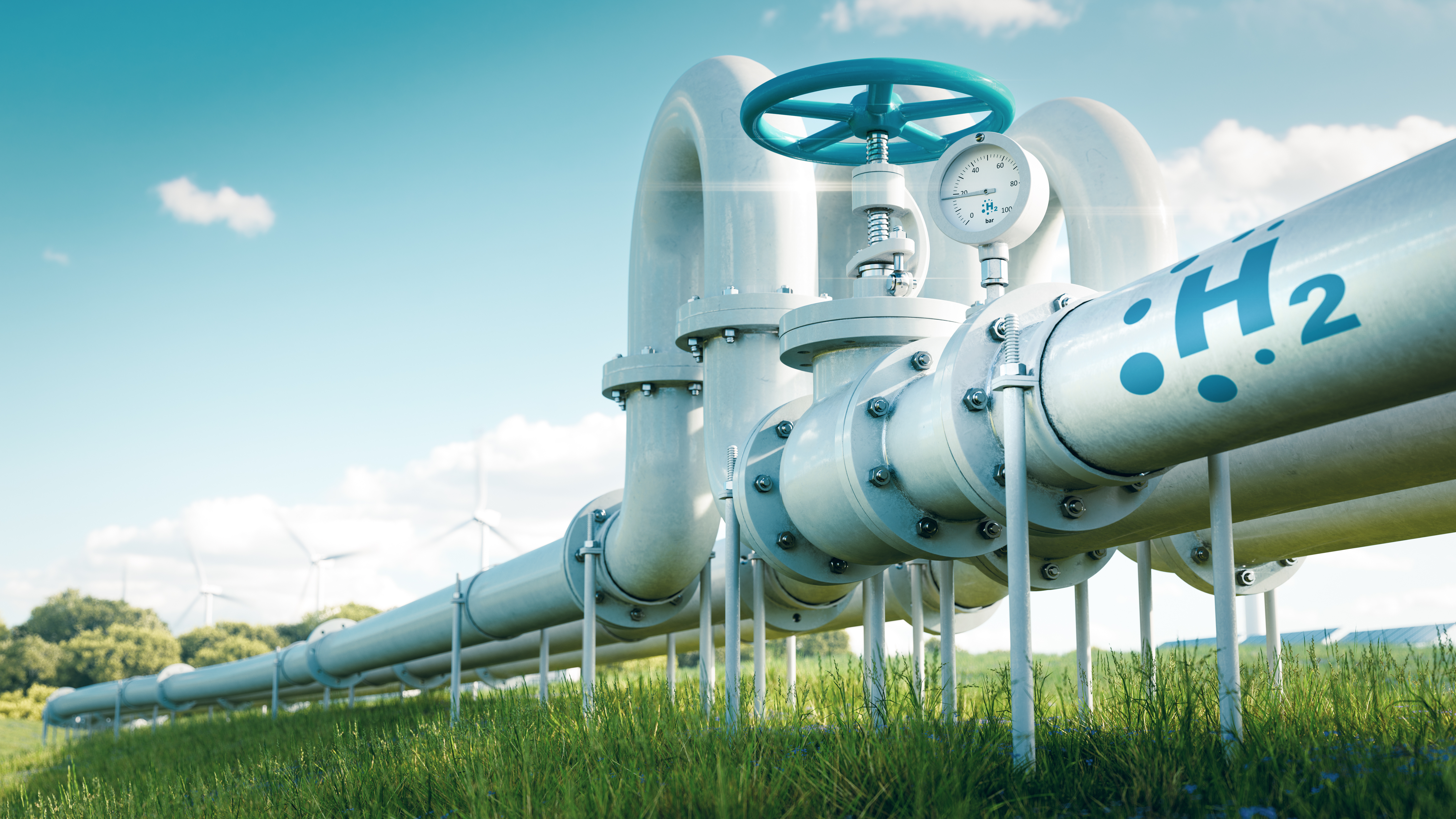GCA to core H2 network

©AdobeStock
Hydrogen is essential for the decarbonisation of industry. Suitable transport networks are needed so that the forward-looking energy carrier can be used nationwide. The German Association of Gas Network Operators (FNB Gas) has now presented plans to complete the construction of the main hydrogen transport network in Germany by 2032. This has great significance for Austria.
Planned "highways" for hydrogen
The draft of the German transmission system operators envisages that in future a large part of the hydrogen will be imported from neighbouring countries, including Austria. In addition, production plants in northern Germany are to cover the hydrogen demand. For transport, the association is counting on the construction of a hydrogen core network - so-called "hydrogen highways". The planned pipelines have a length of about 11,200 kilometres. In addition to modernised existing infrastructure, they include new hydrogen pipelines to be built that span half of Germany.
A total of 309 hydrogen projects were included in the scenario for the hydrogen core network. The feed-in capacity for hydrogen is 101 gigawatts (GW). As exit capacity via the core network for hydrogen supply, 87 GW can be made available.
Hydrogen projects in the pipeline
Gas Connect Austria welcomes the fact that the current state of planning takes a closer look at future network requirements and plans and also takes into account the possibility of cross-border hydrogen transports between Austria and Germany. The indicated entry capacity of 6.25 GWth at the Überackern border crossing point reflects the relevant hydrogen infrastructure projects HyPipe Bavaria and H2 Backbone WAG + Penta-West. Both projects are currently applying for Project of Common Interest (PCI) status with the European Commission. The decision on inclusion is expected to be made towards the end of this year.
Due to its central location, Austria has established itself as an important hub for gas transmission. In view of the national goal of climate neutrality by 2040 and the European Green Deal, our country is a crucial player for intra-European hydrogen transit - also to Germany. Austrian pipeline infrastructure is available as part of the SoutH2 Corridor and H2EU+Store initiatives for the transport of hydrogen from North Africa and Southeast Europe. By connecting several future hydrogen sources, a diversified supply is made possible from the very beginning. This is an important contribution to security of supply.

"We welcome the current planning status of the hydrogen core network in Germany. In particular, the consideration of the transnational initiatives SoutH2 Corridor and H2EU+Store. For the final draft, however, we believe that more clarity is needed regarding the possible exit capacity to Austria."
Stefan Königshofer, Head of Sales Department at Gas Connect Austria
Define exit capacity more clearly
In detail, the plan for the hydrogen core network envisages that the entry capacity at the border crossing points will be 58 GWth. The exit capacity is around 10.6 GWth. It should be noted that in the future - similar to Germany - a large part of the hydrogen needed in Austria will have to be covered by imports. The German and Austrian grids can play an important role here together and connect hydrogen sources from Northern Europe with consumers in Central Europe. Gas Connect Austria suggests that the next modelling should take into account the neighbouring countries' need for hydrogen imports in form of additional exit capacity. In the final draft, it must be clearer at which border crossing points the current 10.6 GWth will manifest itself.
What happens now: Potential hydrogen grid operators had the opportunity to submit comments until the end of July. The route variants presented will be optimised taking all reports into account.
Are you interested in the German hydrogen core network?
You can find all information on the current draft as well as related downloads here: Hydrogen core network.
